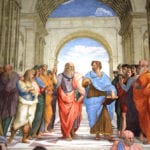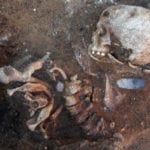 Technology
Technology  Technology
Technology  Humans
Humans 10 Everyday Human Behaviors That Are Actually Survival Instincts
 Animals
Animals 10 Animals That Humiliated and Harmed Historical Leaders
 History
History 10 Most Influential Protests in Modern History
 Creepy
Creepy 10 More Representations of Death from Myth, Legend, and Folktale
 Technology
Technology 10 Scientific Breakthroughs of 2025 That’ll Change Everything
 Our World
Our World 10 Ways Icelandic Culture Makes Other Countries Look Boring
 Misconceptions
Misconceptions 10 Common Misconceptions About the Victorian Era
 Mysteries
Mysteries 10 Strange Unexplained Mysteries of 2025
 Miscellaneous
Miscellaneous 10 of History’s Most Bell-Ringing Finishing Moves
 Technology
Technology Top 10 Everyday Tech Buzzwords That Hide a Darker Past
 Humans
Humans 10 Everyday Human Behaviors That Are Actually Survival Instincts
 Animals
Animals 10 Animals That Humiliated and Harmed Historical Leaders
Who's Behind Listverse?

Jamie Frater
Head Editor
Jamie founded Listverse due to an insatiable desire to share fascinating, obscure, and bizarre facts. He has been a guest speaker on numerous national radio and television stations and is a five time published author.
More About Us History
History 10 Most Influential Protests in Modern History
 Creepy
Creepy 10 More Representations of Death from Myth, Legend, and Folktale
 Technology
Technology 10 Scientific Breakthroughs of 2025 That’ll Change Everything
 Our World
Our World 10 Ways Icelandic Culture Makes Other Countries Look Boring
 Misconceptions
Misconceptions 10 Common Misconceptions About the Victorian Era
 Mysteries
Mysteries 10 Strange Unexplained Mysteries of 2025
 Miscellaneous
Miscellaneous 10 of History’s Most Bell-Ringing Finishing Moves
10 Unusual Founders Of Civilization From World Mythology
There are many different myths about how the world was created. Yet, for humans, the story doesn’t stop there. The world has been home to a huge number of ancient civilizations, and many of them have legendary tales to suggest how they came into being. The most famous in the West is probably about Romulus and Remus, the brothers that were said to have been raised by wolves before founding Rome. The following myths come from five different continents, but some themes seem to be common to all of humankind.
10Manco Capac
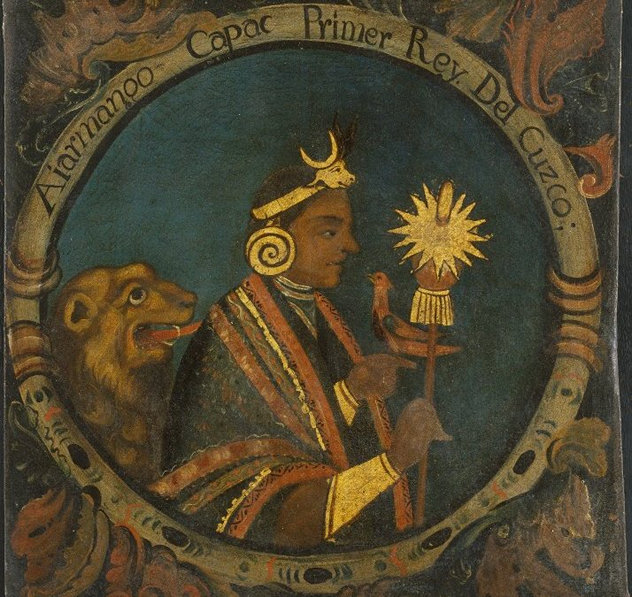
The Inca of South America were a civilization of 12 million people, prominent on the continent prior to the arrival of European settlers. They have no written records, but stories passed on through generations tell of a legendary founder named Manco Capac.
The Inca creation myth says that the world was created by a god named Viracocha. After he created the Earth, he formed people and animals from clay, then sent the people deep underground. He ordered them to emerge from caves and lakes across the planet, and to begin a civilization wherever they found themselves.
Manco Capac emerged from Lake Titicaca, which sits on the border between Peru and Bolivia. He was accompanied by his brothers and sisters, but as they ventured out to find a good place to call home, many of his brothers turned to stone. Eventually, they found a place that Manco liked the look of. He drove his golden staff into the ground and found it to be fertile. He then had a family with one of his sisters—the descendants of which became the Inca—before he also turned into stone.
9Dangun
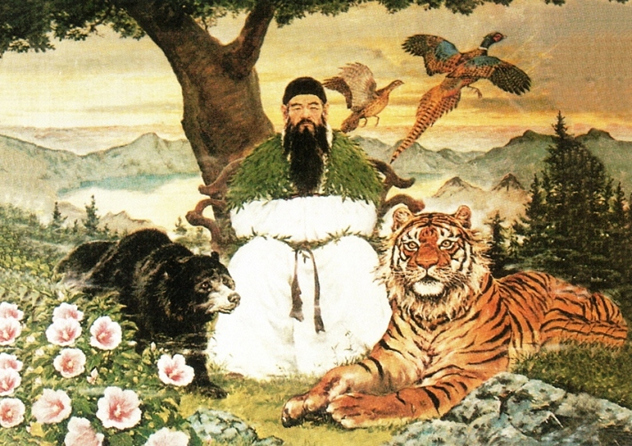
Korean mythology tells of Dangun, grandson of Hwanin, the Emperor of Heaven. Dangun’s father was Hwang-Ung. Hwang-Ung longed to live on Earth, so his father gave him 3,000 followers, and set him down atop Korea’s highest point. Hwang-Ung and his army of spirits set up a government with 360 departments, covering everything from agriculture to the determination of good and evil, making him perhaps the most organized god in world mythology.
One day, a bear and a tiger came to Hwang-Ung and pleaded to be made human. The god said that they would become human if they were willing to spend 100 days living in a cave, with nothing to eat but garlic and mugwort. The tiger only reached day 20 before he was overcome with the need for proper food. The bear stuck it out, and come the hundredth day it turned into a woman named Ung-Yo.
Ung-Yo wasn’t content with a mere change of species, she also longed to have a child. Hwang-Ung himself decided to marry her, and together they had a son, Dangun. Dangun went on to found the first Korean kingdom, Gojoseon, which dates to around 2300 B.C. He is thus considered to be the father of all Korean people.
8Brutus Of Troy
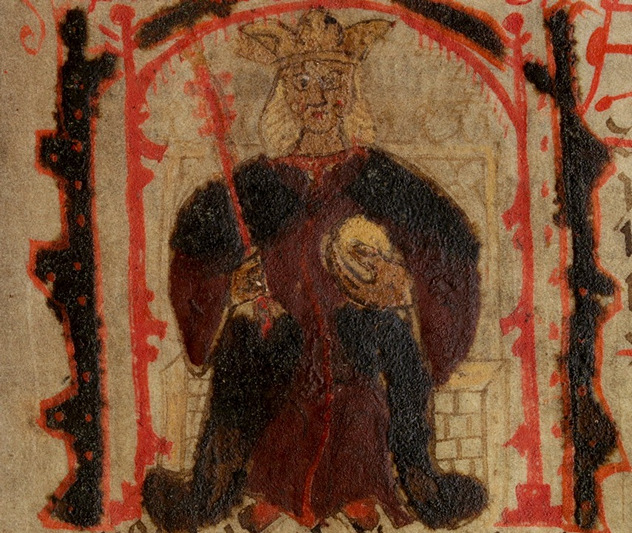
The Trojan hero Aeneas had quite the genes. Legend tells it that he was a forefather of Romulus and Remus, while his great-grandson, Brutus, is the legendary founder of Britain. Aeneas escaped from Troy after that whole business with the giant wooden horse, and went to live in Italy. It is there that Aeneas’s grandson, Silvius, had a love affair with his own niece, from which came Brutus.
One day, Brutus accidentally shot his father with an arrow while they were out hunting, and ended up being banished from Italy. Deciding to rejoin his people, Brutus went to live with Trojans that had been enslaved by Greeks. He eventually led them in an uprising against the Greek king Pandrassus. When the freed Trojans left Greece, the goddess Diana came to Brutus in a dream. She let him know of a beautiful island to the north that was just waiting to be settled, so off Brutus went.
When they eventually reached the island that turned out to be Britain, they found it uninhabited, except for a number of giants. Still, if the Roman goddess of hunting makes a personal recommendation then you’d be a fool to let a giant or two get in the way, so Brutus and his companions happily killed them all. On the river Thames he created a settlement named Troia Nova, or New Troy, which later went on to become London.
7Scota And Gaythelos
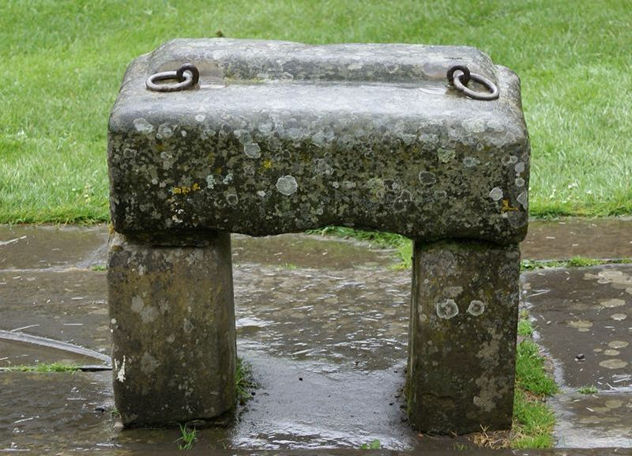
Medieval Europeans were keen to link themselves with antiquity. That’s probably why we have the story of Brutus, and it also explains the legendary founders of Scotland and Ireland. Gaythelos is said to have been an ancient Greek prince that tried to overthrow his father, and ended up being banished alongside his followers. He then made his way to Egypt, where he impressed the pharaoh (possibly by helping fight off some Ethiopians), and married the pharaoh’s daughter, Scota.
Some versions suggest the pharaoh in question is the same one that had a run-in with Moses, and that Gaythelos and Scota had to leave because they weren’t welcomed by the Israelites. Either way, the couple eventually settled somewhere in Spain, and had a son named Hiber. After a few generations of Hiber’s children (his son and grandson were both named Hiber too) being attacked by other people in the area, a bunch of them set sail to find a less populated place to live.
In truth, it seems the characters in the story got their names from the places, rather than the other way round. Scota was named for the Scots, whereas Hiber got his name from Hibernia (an old name for Ireland) and Iberia (which is where you’ll find Spain and Portugal).
There is another part of the legend that links Scotland with the Biblical story of Egypt. For centuries, Scottish monarchs were crowned on a sandstone named the Stone of Scone. It’s also known as the Pillow of Jacob, as it’s said that Jacob of the Bible had rested his head on the block when he received a vision of angels at Bethel. The story says Gaythelos stole the stone and brought it to Spain, and it stayed with his descendants through their long, gradual move to Scotland.
6Lech, Czech, and Rus
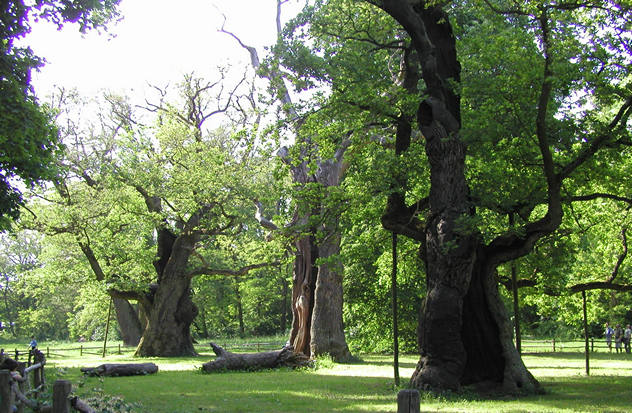
The countries of Poland, Russia, and Czech Republic share a creation myth centered around three brothers: Lech, Czech, and Rus. Most stories suggest they came from the area that is now Croatia, but after that details vary. In each case it’s said that the brothers happened to be walking, and each stopped at a different point and founded a country. Rus was the father of Russia, Czech founded Czech Republic, and Lech settled in Poland.
Quite why the brothers happened to be walking when they decided to go found their respective kingdoms is different from one retelling to the next. Some suggest they were hunting and decided to just wander around a bit. Possibly they were princes, but their father’s kingdom was too small to share, so they decided to find other places to rule.
A different retelling brings in a sister, Vilina. In that story, the brothers were princes of Croatia, ruled by their father Croat. Croat submitted to the rule of Rome, but when he died the three brothers decided they wanted to break free of the empire (after all, what have the Romans ever done for them?). Vilina tipped off the Romans, so her brothers decided to be reasonable and put her in a tower, bricked up the entrance, and left her to die. With the sororicide done, they left for the east and founded their future countries. In the village of Rogalin, Poland, there are three ancient oaks named after the brothers.
5Hayk
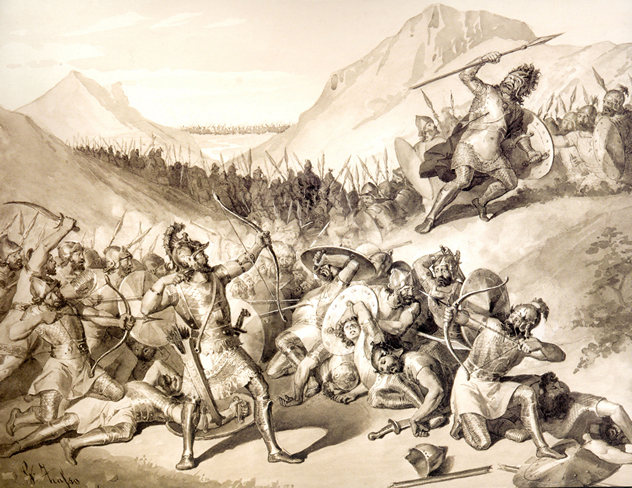
The legendary founder of Armenia is Hayk (also spelled Haik). He has perhaps the most varied collection of origin stories on this list. In one version he is based on Hyas, son of the Greek Titan Atlas. Others say he is the great-great-grandson of Noah, builder of the Ark. He’s often said to be a giant. Wherever he came from, Hayk is depicted as a mighty warrior with a bow that founded Armenia millennia ago.
The Noah version of the story says that Hayk, when he was around 130 years old, went to Babylonia to help in the building of the Tower of Babel. That didn’t work out for him (or anyone, really). In all stories, everyone agrees that Hayk somehow found himself on the wrong side of a Babylonian king, possibly named Bel or Nimrod. Whatever his name, the king ruled over the region (and possibly the world) with tyranny. Hayk was a lover of freedom, and he refused to pay taxes or submit.
Bel took this act of rebellion about as well as you’d expect a tyrannical ruler to take an act of rebellion. He sent legions of soldiers against Hayk, expecting to crush him. Only a few hundred people were loyal to the bow-wielding, curly-haired protagonist, but Hayk led them into battle with a rousing speech. Their superior skill overcame Bel’s forces, and the king took an arrow through the heart straight from Hayk’s bow.
Hayk then become the ruler of the lands that make up modern-day Armenia. Hayk’s successor was his son Armenak, whose name stuck. The father of the nation is remembered with a large statue in the country’s capital, Yerevan. Balanced between two rocks with his bow outstretched, and several times taller than a person, he looks suitably badass.
4China’s Ancient Emperors
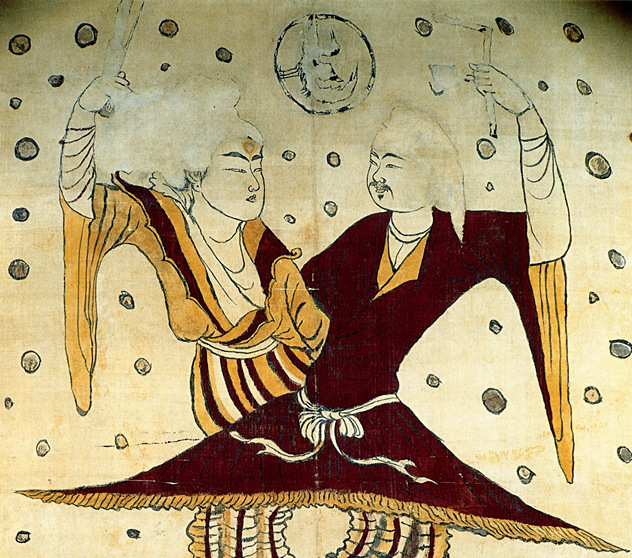
There are a lot of variations in China’s legends, crafted at different points in its history. There are a number of common elements, though, and the usual narrative says that in the very distant past all of the land was swept away in a great flood. The only survivors were two demigods, Fu Xi and his sister Nuwa, who took refuge on a mountain. With the blessing of the Emperor of Heaven, the siblings set about repopulating the world. To speed up the process they created humans from clay, as well as through the traditional method.
It’s curious to note similarities with other foundation myths. The great flood is an obvious parallel to the Biblical account of Noah. More striking is the idea of a sibling pair populating the planet and humans being crafted from clay—two elements that are prominent in the Inca story of Manco Capac. Given that the people that settled South America got there via East Asia, some of the common elements may have been passed down for tens of thousands of years. Or it could simply be that people are generally into stories about siblings getting it on.
Once Fu Xi and Nuwa had finished populating China, they passed on the wisdom of civilization, including agriculture and medicine. Five emperors ruled, but flooding continued to be a major issue. The man that solved that was Yu the Great, whose name is also a badly constructed compliment. Yu’s father, Gun, had been in charge of flood control at first. Gun stole some magical earth from Heaven, which actually did the job quite well, but the Emperor of Heaven wasn’t best pleased about Gun’s sticky fingers and so killed him.
Gun’s body didn’t decompose, and when it was split open three years later it was found to contain his son, Yu. When Yu was put in charge of flood control he had the cunning idea of constructing drainage channels to the sea with the help of dragons. Yu became the first ruler of China’s oldest known dynasty, the Xia. Despite the fact he once fought a nine-headed snake monster with a sword while riding on the back of a dragon, he’s mainly remembered for his talents as a civil engineer.
3Tsoede
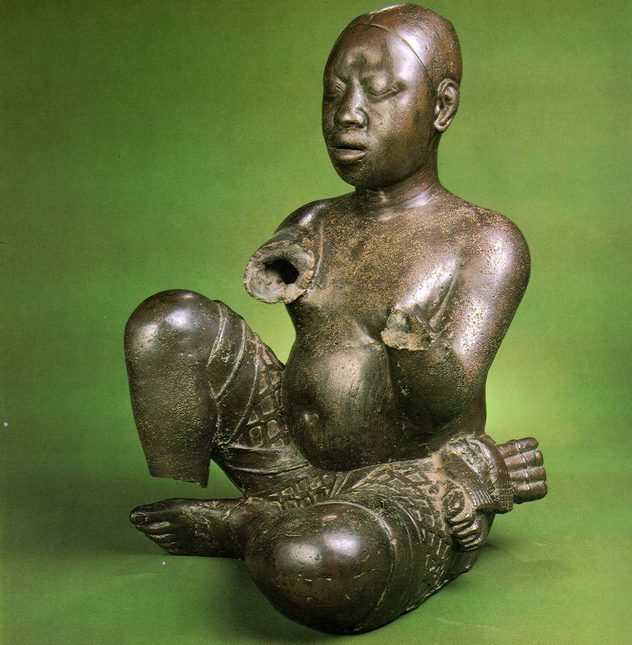
The Nupe are an ethnic group from Niger and Nigeria in West Africa. They tend to live in relatively small towns of up to a few thousand people, each of which has a traditional chief. The Nupe trace the founding of their kingdom back to a man named Tsoede, said to have been born in the 15th century.
Back then, the Nupe had never been unified, and the area they inhabited consisted of a number of independent towns. Many of the Nupe were subordinate to the nearby Igala Kingdom. The Attah, who ruled the Nupe, required a gift of slaves each year, and demanded to receive a son from the sister of the male head of each family.
The largest Nupe town was named Nku, and at one point it received a visit from the son of the Attah. The young prince slept with the daughter of Nku’s chief, getting the girl pregnant. He gave her a ring and a charm to pass on to the child, before returning home. The child was a boy and he was named Tsoede. When he was grown, he was donated to the Attah as a slave. By this time, the old Attah had died and Tsoede’s father was in charge. The ruler recognized his son from the ring and the charm that he wore, and so Tsoede ended up living among his half-brothers as a prince.
The Attah fell very ill, and a diviner said the only cure was the fruit to be found at the top of a very tall tree. All of the Attah’s sons tried to climb the tree, but it was only Tsoede that was able to gather the fruit. This made his brothers jealous, so when his father died years later, Tsoede had to flee with a small group of loyal men. He then proceeded to go from village to village, kill the chief, and instate one of his followers until he had himself a kingdom, which he ruled until age 120. Many chiefs today claim to be descended from those put in place by Tsoede.
2Chata And Chicksah

Given what we know about how humans came to populate the world, it’s probably no surprise that Native Americans might have an origin story that involves leaving a desolate land in the West. The Choctaw and Chickasaw people are two groups of Native Americans that share a common history. Legend says they were led to North America by two brothers, Chata and Chicksah.
When they left their former Western homeland, they were led by a magical pole. Each night the brothers would place the pole in the ground, and in the morning they would travel in whichever direction it was leaning. They followed its instructions, until one morning it remained upright, and that is where they made their home. It’s interesting that the other myth on this list that involves a staff being plunged into the ground at a chosen homeland is also from American natives.
The travelers buried the remains of their ancestors there, which they had carried from the west in sacks made from buffalo. While everything was fine at first, there turned out to be not quite enough space, so Chicksah moved to the north and founded the Chickasaw people, while those in the original area became the Chata.
1Lac Long Quan
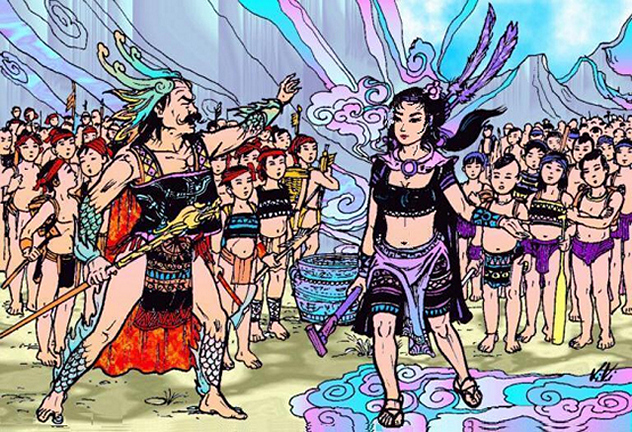
Legend says that all of the people of Vietnam are descended from Lac Long Quan, a god with the ability to transform into a sea dragon. While walking through the land one day, he came across a small white crane being attacked by a Demon Bird. Lac Long Quan went to help the crane, but the Demon Bird transformed into a tiger and attacked. While the fight was difficult, Lac Long Quan won, and the crane revealed itself to be a fairy.
The beauty of the magical woman in front of him prompted Lac Long Quan to propose immediately. The fairy, Au Co, agreed. A year later, Au Co gave birth to 100 golden eggs, which hatched into humans. Eventually, Au Co longed to live in the mountains and Lac Long Quan craved the sea, so the two separated. Fifty children went with each parent—those in the mountains grew rice, and those on the coast lived by fishing.
The state of Au Lac, which inhabited the land of Vietnam from 257 B.C. to 207 B.C., is said to have taken its name from the couple. And that’s why the Vietnamese hatch their children from golden eggs even to this day.
Alan has been to Troia Nova, and can confirm there are no giants around. Brutus must be true, or where would they have gone? You can get more of his logic on Twitter.
